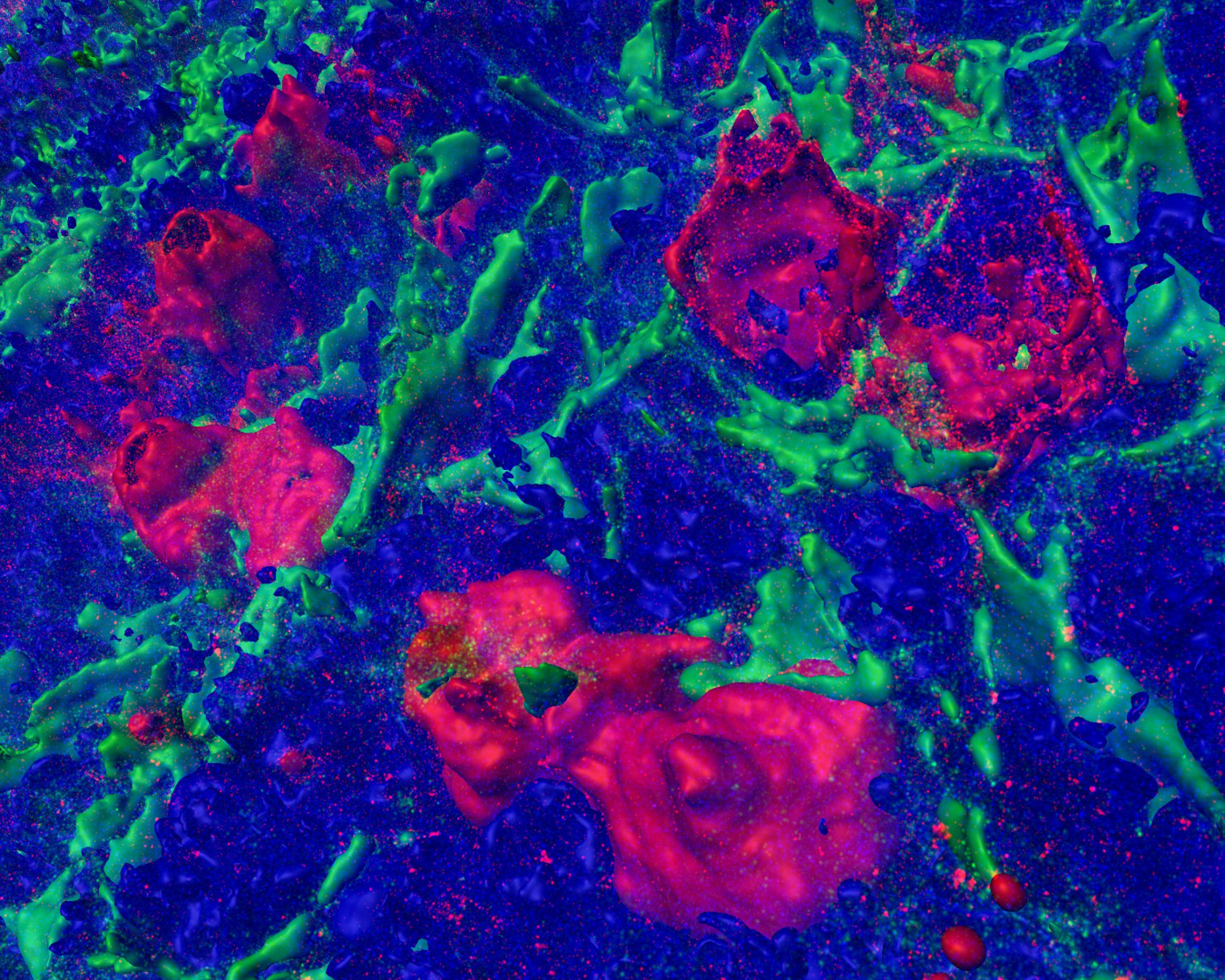July 26, 2022
Role of the protein CD30 for the early detection of Hodgkin's lymphoma
A protein (CD30) sitting on Hodgkin's lymphoma tumour cells is an important diagnostic marker for this cancer. But CD30 is also found on rare activated immune cells. Therefore, a team led by Martin-Leo Hansmann from the Frankfurt Institute for Advanced Studies (FIAS) and Ralf Küppers (Universitätsklinik Essen), with support from the Wilhelm Sander Foundation, investigated whether CD30 cells in inflammatory reactions are precursors of Hodgkin's lymphoma tumour cells and how these CD30-positive cells differ. The results suggest that the inflammatory reactions are not cancer precursors and that the two types of CD30 cells differ significantly in the relationships they maintain with other cells in the tissue.
Hodgkin's lymphoma is one of the most common forms of lymph node cancer, especially among young adults. Researchers led by Prof. Martin-Leo Hansmann from Frankfurt/Main and Prof. Ralf Küppers from Essen have now discovered further gaps in the development of Hodgkin's lymphoma. There, a protein called CD30 is found on the cell surface of the cancer cells (the Hodgkin and Reed-Sternberg cells) as a signal receptor. CD30 is a central marker for the exact diagnosis of Hodgkin's lymphoma, because otherwise only a few immune cells and other lymphomas express CD30. A few years ago, a therapy was developed in which antibodies kill tumour cells directly by binding to the protein CD30.
"We wondered whether unusually large accumulations of otherwise rare CD30-expressing B lymphocytes (white blood cells) could represent a precursor of Hodgkin's lymphoma," Hansmann and Küppers explain. This would be important for understanding the development of lymphoma and possibly for early diagnosis. We were able to show that this is not the case," says Küppers. To prove this, they isolated individual CD30-positive B cells from tissue sections of selected lymph nodes under a microscope using laser beams. They then multiplied from numerous cells the part of the genetic material containing the antibody genes and determined the sequence of the genes. In this way, the researchers were able to see whether the multiplied B lymphocytes are formed from different precursors or whether they are descendants of a single cell. The latter is typical for a lymphoma, since every lymphoma arises from the malignant degeneration of a single lymphocyte. Of the eight lymph nodes examined, none were CD30 B lymphocytes from a single lineage. Thus, there is no evidence that these are lymphoma precursor structures. Apparently, these are inflammatory reactions in which many B lymphocytes express the activation marker CD30.
For the important distinction of Hodgkin's lymphoma from an inflammatory reaction with many CD30 B cells, the researchers found relevant differences in the relationship of reactive CD30 B cells and Hodgkin's and Reed-Sternberg cells to other cells in the immune cell microenvironment in the tissue. Normal CD30 B cells and Hodgkin and Reed-Sternberg cells show different preferences for spatial proximity to other cells in their environment.
"We were interested in which gene changes, i. e. mutations, are involved in the development of Hodgkin's lymphoma," says Hansmann. With other cooperation partners, Hansmann and Küppers were able to show in a first partial result that the gene for a known regulator of gene activities, the BCOR protein, lost its function in some cases of Hodgkin's lymphoma due to mutation. With further studies on the gene alterations in Hodgkin's lymphoma, the researchers hope to find new starting points for a more targeted therapy of this cancer in the future.
Publications: 1. Giefing M, Gearhart MD, Schneider M, Overbeck B, Klapper W, Hartmann S, Ustaszewski A, Weniger MA, Wiehle L, Hansmann ML, Melnick A, Béguelin W, Sundström C, Küppers R, Bardwell VJ, Siebert R (2022), Loss of function mutations of BCOR in classical Hodgkin lymphoma. Leuk Lymphoma; 63:1080-1090
Hannig J, Schäfer H, Ackermann J, Hebel M, Schäfer T, Döring C, Hartmann S, Hansmann ML#, Koch I# (2020), Bioinformatics analysis of whole slide images reveals significant neighbourhood preferences of tumour cells in Hodgkin lymphoma. PLoS Comput Biol; 16:e1007516, #common senior authors.
3 Lumer L, Wurzel P, Scharf S, Schäfer H, Ackermann J, Koch I, Hansmann ML (2021), 3D connectomes of reactive and neoplastic CD30 positive lymphoid cells and surrounding cell types. Acta Histochem; 123:151750
4 Wurzel P, Ackermann J, Schäfer H, Scharf S, Hansmann ML, Koch I (2021), Detection of follicular regions in actin-s
Illustration: Detailed three-dimensional view of several red-labelled CD30-positive lymphocytes in an inflamed lymph node. Actin filaments traversing the tissue are marked in green for demarcation. The blue staining marks other cells. © Martin-Leo Hansmann
